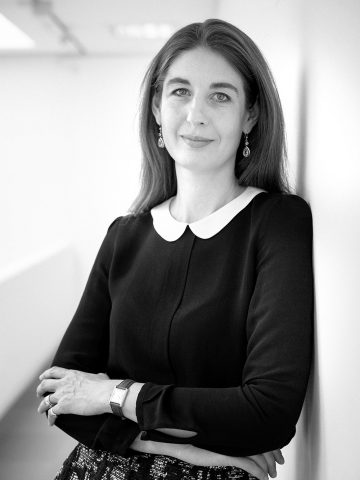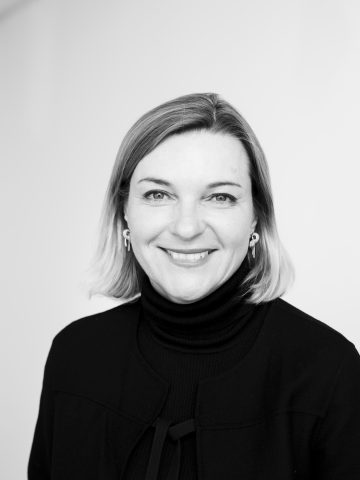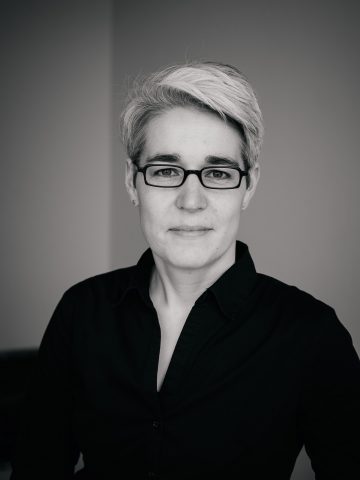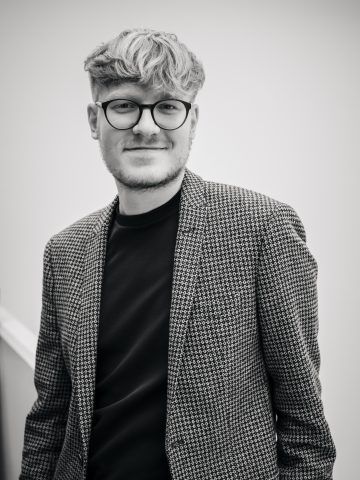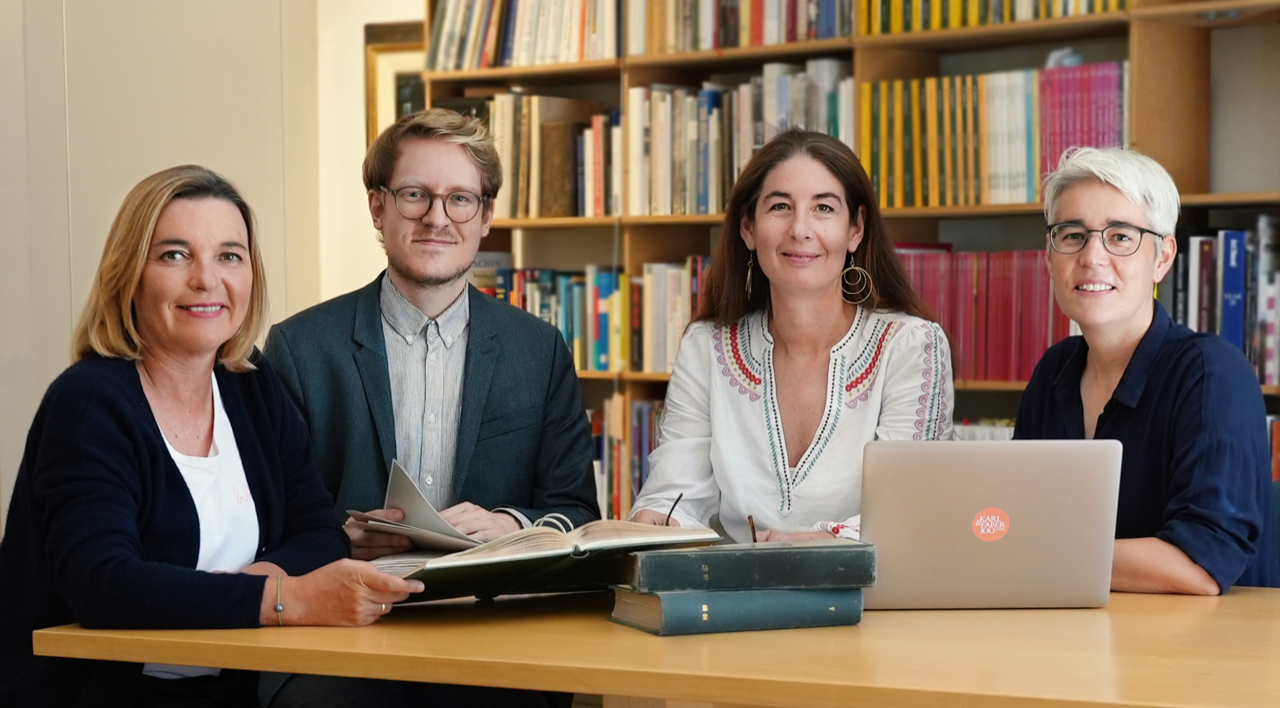Provenance Research
What is the story behind a work of art? In which collections did it hang, through whose hands did it pass? The answers to these questions are becoming increasingly explosive and important – especially on the auction market.
Over the past 20 years, provenance research has established itself as a separate field of art studies and is now one of the main areas of responsibility of every auction house. With the Cultural Property Protection Act, which came into force in 2016, and the associated obligations for the auction business, the topic has become even more relevant.
Karl & Faber is aware of this responsibility and has built up a great deal of expertise in the field of provenance research and restitution of artworks over the past few years.
The aim of the sometimes extensive research carried out by our own provenance team of art historians and lawyers is to reconstruct the ownership succession and relationships as completely as possible. If there is an initial suspicion or actual evidence of Nazi persecution-related confiscation of the artwork between 1933 and 1945, Karl & Faber mediates between the seller and the descendants of the expropriated former owner in order to reach an amicable agreement, usually in the form of a contractually agreed profit share.
At first glance, this may appear to be a disadvantage for a current seller if he has to cede a share of the sale price realised at auction to the heirs of the former owner. Especially if the work was acquired in good faith long after 1945. However, the seller also benefits directly from the value-forming factor of a provenance and exhibition history of the artwork, which should not be underestimated. On the one hand, because the research can sometimes lead to renowned collections of important personalities and important museum exhibitions. Secondly, because the work is free of any claims from the time of the amicable settlement and can be exhibited and traded in the future without restriction and with a clear conscience.
The resulting increased interest on the buyer’s side often leads to a real bidding war during the auction – and thus to a higher hammer price for the seller. Detailed provenance research is therefore in the interests of all parties involved.
As an auction house, we are pleased to be able to make a significant contribution to closing some dark chapters in the provenance of works and to find a practical, fair and just solution – as mediators, we always have all parties involved in mind: the heirs’ representatives as well as the current art owners.
A few examples:
2023: Max Slevogt – “Spaziergang” (The walk)
During the scientific cataloguing of the work, a search report on this very painting was found in the Lost Art Database of the German Lost Art Foundation, Magdeburg. The extensive provenance research that followed led to an astonishing result and shows that not all works of art listed in the Lost Art Database automatically have to become a case of restitution. The “Spaziergang” has been in the possession of the Frankfurt collector Hugo Nathan since 1917 at the latest. Upon his death in 1922, Hugo Nathan’s wife, Martha, inherited the art collection. After the National Socialists seized power and the resulting increasing repression and threat of persecution, Martha Nathan decided to emigrate from Frankfurt to Switzerland in 1938. However, all of her belongings were searched before her departure and the oil paintings they contained, including the Slevogt painting “Spaziergang”, were confiscated as “valuable cultural property” and handed over to the Städel Museum in Frankfurt for safekeeping in May 1938, where they remained during the war.
Thanks to the support of Dr Iris Schmeisser, Head of Provenance Research and Historical Archives at the Städel Museum, we were able to view the archive files and extensive correspondence on this case in digitalised form. These show that after long and tough negotiations, Martha Nathan finally succeeded in getting three paintings, including the Slevogt, back. A confirmation of receipt signed by Martha Nathan and dated 1 May 1952 is available in the Städel Museum archive.
With this detailed information and archive documents, Karl & Faber was able to obtain the deletion of the wanted notice in the Lost Art database and successfully sell the painting at the anniversary auction in June 2023 for €38,100 (incl. buyer’s premium).
The US law firm representing the Nathan heirs then had a new entry added to the database, referring to a possible second version of the painting that had been confiscated in Paris in 1942. However, this is no longer directly related to our painting.
You can find more information in our article Provenance Revealed: “Spaziergang” (The walk) by Max Slevogt
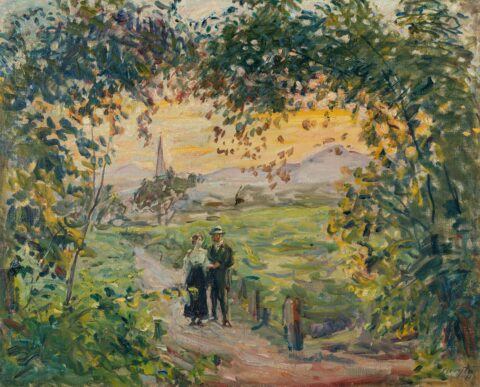
2023: Lesser Ury – The Way to the Mill
The oil painting “The Way to the Mill” by Lesser Ury was created in the early 1880s. At this time, Ury was working in the neighbourhood of the Flemish village of Vollluvet, today a district of Brussels. In contrast to his rather lively city scenes, Uri opted for a tranquil landscape motif here.
After his death in 1931, the painting was bequeathed to his Jewish cousin Sophie Bieber. The entire Bieber family was subjected to persecution by the National Socialist regime from 1934 at the latest. After her son became unemployed, Sophie Bieber decided to sell some of her paintings to Max Perl in Berlin in 1934. It was sold in March 1934 under lot number 1275. Sophie Bieber died by suicide in 1935.
After months of research, the heirs of Sophie Bieber are finally traced with the support of Anna Rubin (HCPO, New York) at the end of 2022. Karl & Faber mediates a fair and equitable solution.
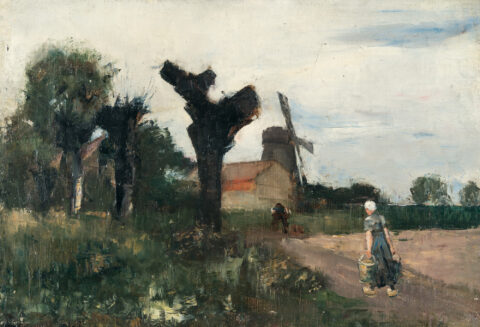
2022: Max Liebermann – Portrait of the surgeon Ferdinand Sauerbruch (1875-1951) – Study
The “Portrait of the surgeon Ferdinand Sauerbruch (1875-1951) – Study” is an expressive, independent study of the portrait that is now in the Hamburger Kunsthalle. It is one of the last portraits by the great portraitist Max Liebermann and depicts one of the most important surgeons of the 20th century. The painting was first shown at an exhibition in 1932, the year it was created, where it was enthusiastically received by critics. But the very next year, when the National Socialists seized power, the 85-year-old Jew Max Liebermann came under increasing pressure. In May, he was forced to resign from the Prussian Academy and relinquish his position as Honorary President. He had been a member for a total of thirty years and its president for twelve. Liebermann died in 1935, with only a few intrepid friends and companions attending his funeral and no official honours from the Academy or the city of Berlin. In 1936, all of Liebermann’s works were confiscated from the Berlin National Gallery. His daughter Käthe and her husband Kurt Riezler emigrated to New York in 1938. They endeavoured in vain to persuade the 81-year-old widow Martha Liebermann to flee as well, but she remained behind in Berlin alone. Together with the art historian and Liebermann biographer Erich Hancke, she organised her husband’s artistic estate and marked all of the artist’s unsigned works with an estate stamp (signature facsimile). This stamp makes it possible to reconstruct which previously unsigned works she inherited. Around 1938, this estate was stored at the Bruno Cassirer publishing house in Berlin. After the so-called “Jewish ban” was imposed on the government district, Martha Liebermann was no longer allowed to enter the family villa at the Brandenburg Gate. Due to the ever-increasing reprisals, Martha only agreed to emigrate from Germany in 1940, but all efforts by friends, including Walter Feilchenfeldt, to obtain a visa for Switzerland failed. In 1943, Martha Liebermann suffers a stroke and is subsequently bedridden and partially paralysed. In March 1943, she commits suicide to prevent her deportation to the Theresienstadt concentration camp. The inventory of the Liebermann family’s flats is confiscated by the National Socialists, confiscated without compensation and auctioned off. The houses on Pariser Platz and Graf-Spree-Straße are destroyed by bombs. This study of the Sauerbruch portrait also bears the estate stamp and thus comes from the confiscated estate of Martha Liebermann. It did not reappear on the public art market in Düsseldorf until 1990.
Thanks to the mediation of Karl & Faber, the former owner, who had consigned the Sauerbruch portrait to the auction, reached an agreement with the Liebermann estate in the spirit of the Washington Agreement. The painting is thus contractually exempt from any restitution claims and was successfully sold at our auction on 8 December 2022 with a result of €127,000.
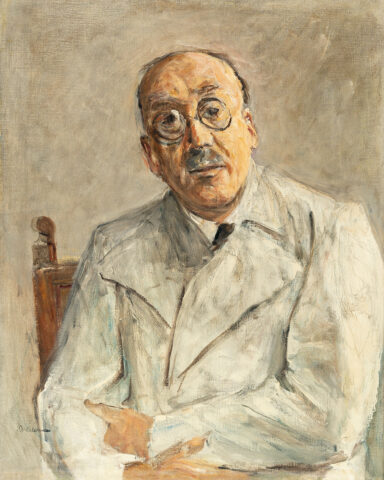
2022: Paul Signac – La Grue l´Union
The harbour scene “La Grue l’Union” by Paul Signac took an unusual turn as part of the provenance research. Painted in 1884, it was shown just two years later in the eighth exhibition of the famous Société des Artistes Indépendants. The work was part of the famous collection of the Jewish lawyer and art collector Armand Isaac Dorville (1875 – 1941).
As part of Karl & Faber’s research, an original suspicion of looted art has been dispelled. The painting was listed and illustrated in the 1941 auction catalogue in Nice. However, a descendant of the family recalled in conversation with the heirs’ representative that a nephew of Dorville had taken it out of the auction at short notice and hidden it on his estate in France. It was not until the 1960s that it finally appeared on the art market.
The case is therefore not one of the most prominent cases of restitution, but should receive at least as much attention. Here, too, the injustice of the National Socialist era is indirectly evident and should not be forgotten.
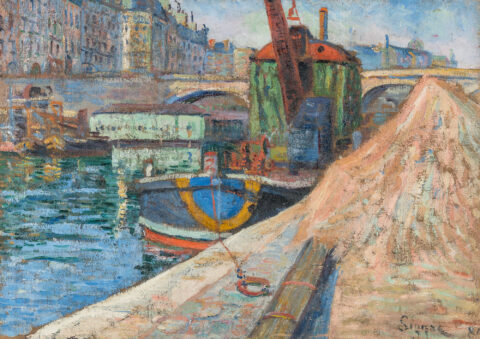
2019: Max Liebermann – Study on bathing boys
After Max Liebermann’s death, his widow Martha Liebermann organised his artistic estate together with the art historian and Liebermann biographer Erich Hancke. All of the artist’s unsigned works were given an estate (facsimile) stamp. This stamp, which is also on the present print, can be used to reconstruct which previously unsigned works were inherited by his widow.
Martha Liebermann was driven to her death by the National Socialist regime in March 1943 because of her Jewish origins. What was left of Liebermann’s estate at the time of her death was confiscated by the German Reich and confiscated without compensation.
The consignor of the drawing has decided to come to an agreement with the Liebermann estate and thus fulfil the spirit of the Washington Agreement. According to the contractual agreement, the study for “Badende Knaben” is exempt from any restitution claims.
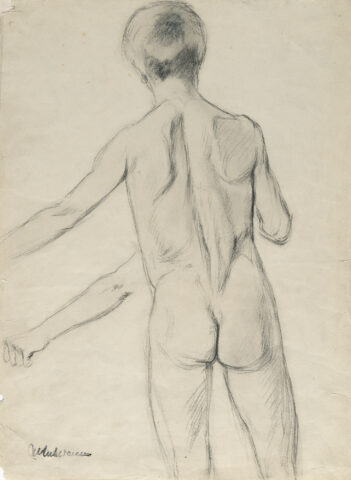
2015: Franz von Stuck – Die Sinnlichkeit
In 2015, the auction house demonstrates its negotiating skills with Franz von Stuck’s spectacular painting “Die Sinnlichkeit” from the former property of the Jewish Flersheim couple. After the wife and son fled in 1937, the work was purchased by the German Reich for the Führer Museum in Linz. After the war, the oil painting ended up in the US Army’s Central Collecting Point and was sold by the Free State of Bavaria to the collector Carl Laszlo in 1963. Thanks to the mediation of Karl & Faber, his heir decides to reach an agreement with the Flersheims’ heirs. As a result, the painting was sold unencumbered by third-party claims for a sensational €550,000 (result including buyer’s premium).
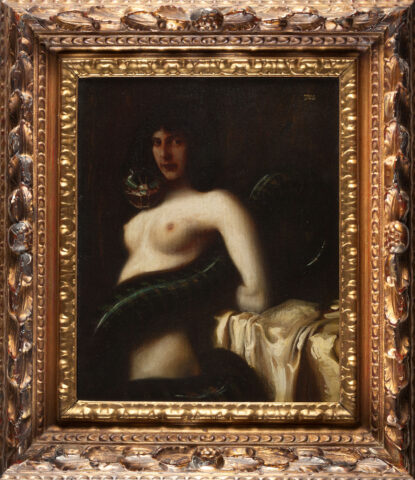
2018: Lovis Corinth – Augustus bridge in Dresden
Two watercolours by Lovis Corinth, including “Augustus bridge in Dresden“, will be auctioned from the Curt Glaser Collection in 2018. Through the mediation of Karl & Faber, the former owners reached an agreement with Glaser’s heirs.
The art historian and collector Professor Dr Curt Glaser (Director of the Berlin State Art Library from 1927, in exile since June 1933) was forced to retire in 1933 due to his Jewish ancestry and was forced to leave Germany. In order to finance his journey into exile, he had large parts of his extensive collection auctioned off by Max Perl in Berlin in May 1933.
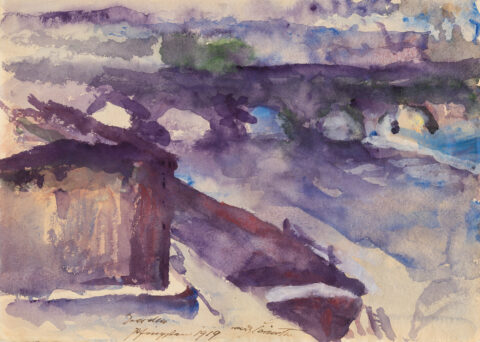
2017: Wilhelm Busch – Herbstlicher Waldrand mit sitzender Rotjacke
In 2017, Karl & Faber auctioned two drawings by Pompeo Batoni from the Fritz Hausmann art collection and eight paintings by Wilhelm Busch, including “Herbstlicher Waldrand mit sitzender Rotjacke“, from the Rudolf Neugass collection. It was restituted to the heirs of Rudolf Neugass and successfully auctioned by Karl & Faber.
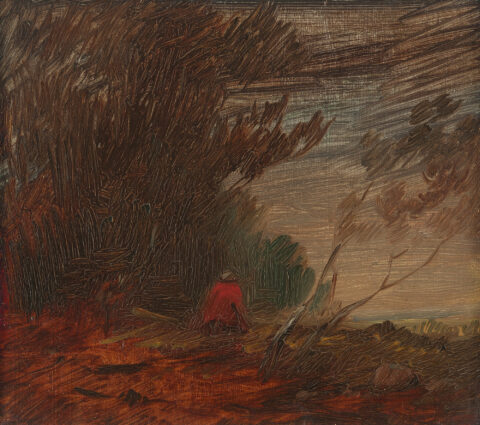
2011: Wilhelm Trübner – Selbstbildnis
In 2011, Karl & Faber successfully brokered the auction of a self-portrait by Wilhelm Trübner from the collection of the Jewish industrialist Berthold Nothmann.
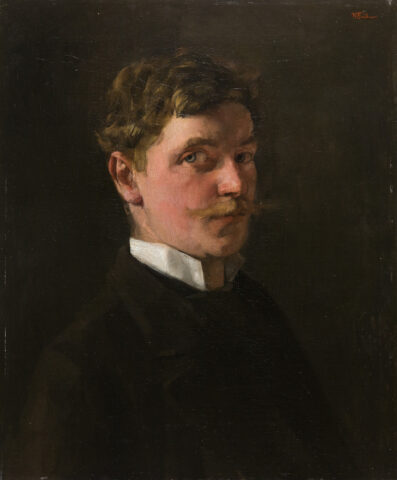
Panel discussion & conference
In May 2019, Dr Rupert Keim took part in the panel discussion of the colloquium “Provenance and Collection Research” at the Central Institute for Art History. Karl & Faber also provides financial support for its research work.
In autumn 2019, Karl & Faber hosted a meeting of the German Art Trade Interest Group on the topic of “Fair and just? Restitution and Provenance in the Art Market. Practice. Problems. Perspectives”. The conference will shed light on the historically and legally complex issue of Nazi-looted art from the perspective of market players. The keynote speech “Law, Justice, Peace” will be given by Professor Dr Michael Wolffsohn, award-winning historian, author and publicist in the field of contemporary history. You can read his lecture in our “Journal” published in spring 2020: Journal 2020 | PDF (p. 36-41)
In these and other cases, Karl & Faber repeatedly succeeds not only in achieving top prices for the artworks, but also in finding a satisfactory solution for consignors and heirs.
In order to fulfil its duty of care, Karl & Faber not only conducts provenance research itself. The art auction house also commissions renowned provenance researchers and has all works in the printed auction catalogues individually checked against the Art Loss Register’s database before each auction. The Art Loss Register is the world’s largest database of lost and stolen artworks.
Outside the auction business Karl & Faber is also strongly committed to the topic of provenance and restitution outside the auction business. In November 2016, Karl & Faber will be hosting the event “Everything remains different? The Cultural Protection Act – A position statement”. A panel of experts will discuss the most pressing questions regarding the amendment to the Cultural Protection Act, which came into force in 2016.
You can find more articles on the subject of provenance in our current series “Provenance Revealed”:
Provenance Revealed: General Introduction
Provenance Revealed: “Spaziergang” (The walk) by Max Slevogt
Provenance Revealed: The dealer and auctioneer as a kind of mediator?
Provenance Revealed: Is My Artwork “Lost”?
Provenance Revealed: Provenance research in practice
Provenance in the art trade – will the judgement of the Federal Court of Justice bring about change?
Our provenance team will be happy to answer all your questions
Contact
